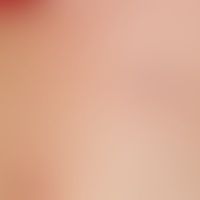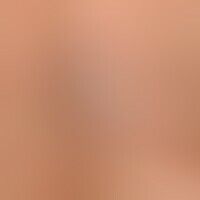Image diagnoses for "Torso", "Plaque (raised surface > 1cm)", "white"
16 results with 42 images
Results forTorsoPlaque (raised surface > 1cm)white

Lichen sclerosus extragenital L90.0
Lichen sclerosus extragenitaler: completely asymptomatic, progressive, generalized, clinical picture, existing for several months. horizontal arrows: papules aggregated to small plaques with small brownish splinters = horn inclusions. vertical arrow: fresh papules; slight perilesional redness; encircled: efflorescences aggregated to larger plaques.
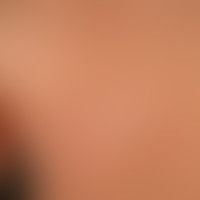
Circumscribed scleroderma L94.0
Morphea type or plaque type of circumscribed scleroderma: slightly idurated irregularly bordered white plaque with a parchment-like, scale-free surface; discreet, light red rimythema.

Pityriasis rosea L42
Pityriasis rosea: clearly visible primary medallion in the right axilla. the red colour typical of the flock in white skin is completely absent in dark skin.

Lichen sclerosus extragenital L90.0
Lichen sclerosus extragenitaler: confetti-like white plaques in surrounding erythema; no significant subjective symptoms.

Graft-versus-host disease chronic L99.2-

Intermediate leprosy A30.8
Leprosy dimoprhe: tuberculoid borderline type of dimorphic leprosy with extensive hypopigmented, hardly infiltrated plaque (spot).

Lichen sclerosus extragenital L90.0
Lichen sclerosus extragenitaler. grouped, symptomless, confetti-like white spots and plaques with parchment-like, somewhat shiny surface.

Leprosy (overview) A30.9
Leprosy (overview): Leprosy lepromatosa B (Boderline type) with large-area clearly infiltrated, borderline, anaesthetic and hypopigmented plaques, accompanied by inflammatory leprosy reaction

Leprosy (overview) A30.9
Leprosy (dimorphic leprosy): here as tuberculoid borderline type with large-area hardly infiltrated, hypopigmented hypaesthetic plaque

Lichen sclerosus extragenital L90.0
Lichen sclerosus extragenitaler: small and large, partly sharply and partly blurredly bordered spots and plaques with parchment-like surface; in places spatter-like bleeding (chest area left).

Pityriasis rosea L42
Pityriasis rosea: Extended upper body oriented less itchy exanthema with characteristic alignment in the cleft lines of the skin.
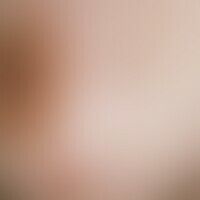
Lichen sclerosus (overview) L90.4

Psoriasis vulgaris L40.00
psoriasis vulgaris. plaque psoriasis. the 54-year-old patient has been suffering from this non-itching disease for about 30 years. he has given up treatment in the meantime. fully developed, untreated psoriasis vulgaris with 5.0-7.0 cm large, coarse plaques covered by firmly adhering scaly deposits, which give the plaques their white-grey colour. the plaques have a reddish edge (here the actual red colour of the plaques is not covered by scales).
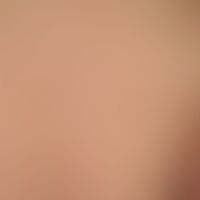
Lichen sclerosus (overview) L90.4
Lichen sclerosus et atrophicus: extragenital infestation. Monotopic infestation.

Circumscribed scleroderma L94.0
Circumscribed scleroderma (plaque-type): Extensive whitish plaques in the area of the back in young patients, continuously progressive for 10 years.

Leprosy (overview) A30.9
Leprosy (overview): Borderlinelepromatous leprosy (BB), plaques and dome-shaped punch-out lesions.

Leprosy lepromatosa A30.50
Leprosy lepromatosa: Leprosy lepromatosa B (Boderline type) with large-area clearly infiltrated, borderline, anaesthetic and hypopigmented plaques, accompanied by inflammatory leprosy reaction

Lichen sclerosus extragenital L90.0
Lichen sclerosus extragenitaler: a progressive, generalized clinical picture (no involvement of the genital mucosa) with disseminated "confetti-like", barely elevated white papules.
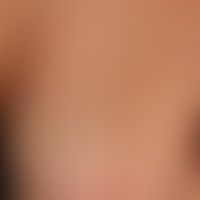
Lichen sclerosus extragenital L90.0
Lichen sclerosus extragenitaler (and genital): generalized, itchy Lichen sclerosus with small and large, partly sharp and partly blurred bordered spots, plaques and erosions, known for years.

